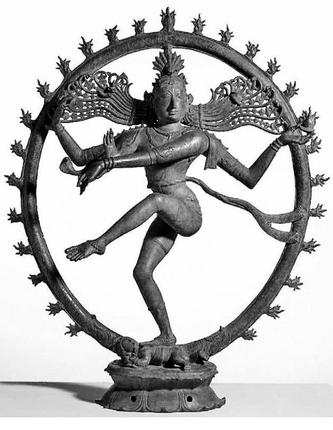NGA Cut Corners, Bought a Stolen 1000-Year-Old Nataraja Sculpture

Chennai, June 28, 2013: The case of a 1000-year-old Nataraja sculpture stolen from a temple in Tamil Nadu and allegedly sold to the National Gallery of Australia (NGA) in Canberra, has just got murkier.
Following public pressure, the NGA, which has been denying any wrongdoing, recently released a detailed press release explaining the process of acquisition and the documents it had consulted. However, the statement has raised fresh questions.
Photographs of the Nataraja allegedly taken by smugglers in what appears to be an Indian setting, and e-mailed to Subhash Chandra Kapoor, a U.S.-based antiquities dealer who was identified as the brain behind the theft and is now in jail in Chennai, have surfaced. The new evidence raises doubts about some of the NGA’s claims.
Last year, the Idol Wing of the Tamil Nadu Police unravelled the role of an international network in the theft of 18 ancient bronze sculptures from two temples in Suthamali and Sripuranthan. Their investigations led to Kapoor’s arrest in Germany. He was extradited to India in July, 2012.
The police, which found a visual match between the stolen Nataraja and the one displayed in the NGA, sent a letter rogatory about six months ago, seeking information. Amazingly, however, the NGA denied receiving it. When The Hindu got in touch with the Australian Attorney General’s Department that handles international requests for assistance, it refused to either confirm or deny the receipt of a letter rogatory. A spokesperson, citing Australian laws, said they could not disclose details.
However, newspapers across the world and blog sites that track illicit antiquities, kept the pressure on and highlighted how various museums including the NGA had purchased artefacts from Kapoor without verifying the provenance certificate — a record of its successive ownership.
Following this, the NGA in a press release acknowledged that it had bought 22 artefacts from Kapoor, and briefly described how it acquired them. It specifically explained how it purchased the Nataraja in 2008. It had negotiated for a year with Kapoor and sent experts to his New York gallery to view the sculpture before purchasing it.
The gallery claimed it had verified a certificate issued by the Art Loss Register, which mentioned that the Nataraja was not in its register of stolen objects. The gallery consulted Tamil Nadu police websites and liaised with a certain Chola bronze expert in India, it further stated.
However, the NGA refused to reveal the names of the experts consulted. This correspondent spoke to some well-known experts in ancient sculptures in Chennai; all of them denied any knowledge of the Nataraja. The NGA had not contacted them.
Police sources confirmed they were not contacted either. They pointed out that the letter issued by the Art Loss Register does not establish that the Nataraja was not a stolen one. All it states is that the artefact is not in the register. The Art Loss Register is a private entity that mains a database of lost and stolen art works and antiques.
The most damaging evidence challenging the claims of the NGA was published recently in ‘Chasing the Aphrodite’ (chasingaphrodite.com), a blog site run by Jason Felch, a reporter with the Los Angeles Times , and Ralph Frammolino, who trains journalists in investigative reporting. This blog posted two pictures (published here with permission), which it claimed were photographed by smugglers after the Nataraja icon was stolen. These digital images were mailed to Subhash Kapoor in October 2006, the blog adds. The blog has not explained how the images came into its possession.
These pictures, as ‘Chasing the Aphrodite’ points out, raises questions about the NGA’s claim that Kapoor provided them “with a document stating that he had purchased the bronze [Nataraja] from a Washington D.C. man in October 2004.”
“The story of the Washington owner was a fabrication, the records show,” the blog says. The Idol Wing of the police had stated on their website that one of Kapoor’s accomplices had shipped a consignment containing a stolen Nataraja to the U.S. in November 2006.
Another claim by the NGA that it had checked records of the Archaeological Survey of India before purchasing the Nataraja is not verifiable since the gallery does not provide names of the persons it consulted.
Police sources told The Hindu they are not convinced that the NGA had followed due diligence. The NGA press release has, however, committed thus: “If, at the end of the legal process, the courts determine that Mr. Kapoor has been trading in stolen antiquities, and then it is possible that the Gallery is a victim of fraud. Until the results are known, the Gallery will continue to cooperate with the relevant authorities.”
Source: The Hindu, DT. June 28, 2013.







